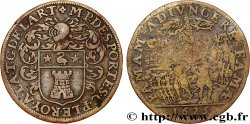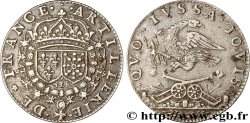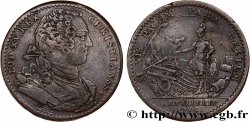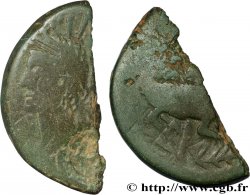正面
正面的文字 L. LA. DE. BOURBON. D. DU. MAYNE. GRD. ME. DE. LARTRIE.
正面的说明书 Buste à droite du duc du Maine non signé.
背面
背面的文字 FOEDERA. FVLMINE. SANCIT ; À L'EXERGUE: ARTILLERIE. 1698.
背面的说明书 Jupiter radié debout de face entre son aigle et un foudre, la main droite levée, une massue dans la gauche.
背面的翻译 IL GARANTIT LE TRAITÉ PAR SA FOUDRE.
历史细节
ARTILLERY
Before Louvois, the artillery was entrusted to civilian contractors who provided the men and equipment for each gun in battery for a given price. It came under a grand master of the artillery, a charge created under Charles VII, which belonged to Sully from 1599 to 1610 or to the Duke of Meilleraye under Richelieu. With Louvois, the artillery became an integral part of the army and was protected by the regiment of the king's riflemen. Ranks in the artillery were more accessible to commoners than in other regiments, advancement was given on merits and talents. Until the 18th century, the equipment left much to be desired with different calibers, different carriages and different wheels. The standardization and modernity of artillery will owe much to J.-B. de Gribeauval, Inspector General of Artillery since 1776. At the end of the 18th century, French artillery will be the first in Europe and this superiority will explain the victories of the Revolution.










 对产品描述纠错
对产品描述纠错 打印
打印 分享我的选择
分享我的选择 提问
提问 Consign / sell
Consign / sell
 产品介绍
产品介绍












